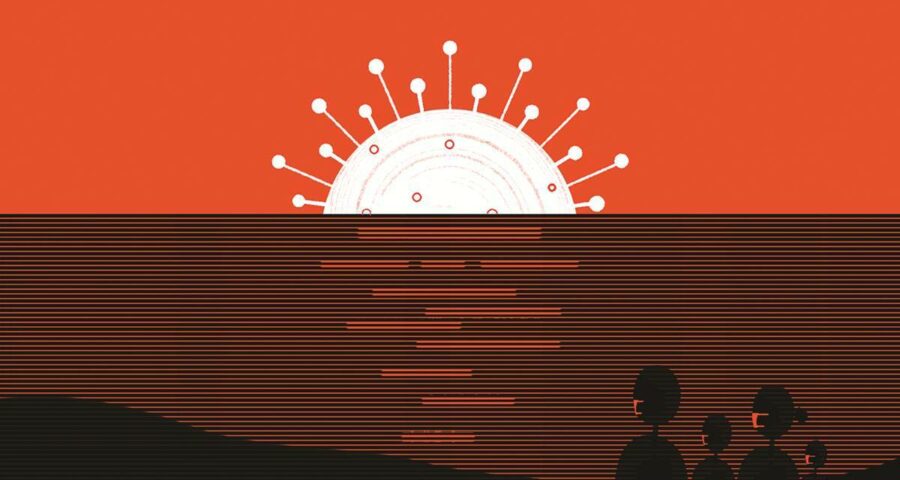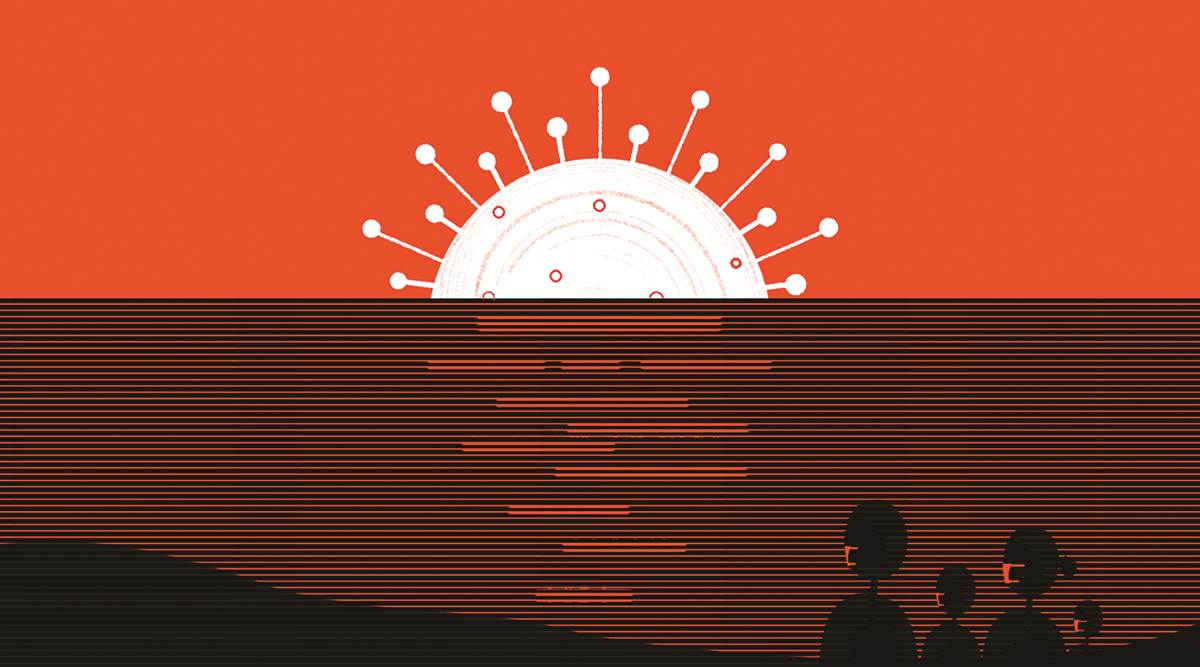One of the important aspects of this pandemic is that an infected person can transmit the infection to others in the community in the pre-symptomatic but infectious stage.
The last year has been among the most disruptive in mankind’s recent history. The SARS-CoV-2 pandemic, which broke out about a year ago, has tested many governments as to their abilities to deal with extraordinary emergency situations rapidly. Moreover, it has also tested the abilities of the scientific community in terms of mitigating the situation and finding solutions at an unprecedented speed.
One of the important aspects of this pandemic is that an infected person can transmit the infection to others in the community in the pre-symptomatic but infectious stage. While the disease is severe or fatal in only a few, its spread in the community happens at a much higher rate than we know. The most striking evidence for this difference comes from serosurveys, where we test people for the presence of SARS-CoV2-specific antibodies — a reliable marker of infection and recovery.
In India, the first serosurvey was conducted by the Indian Council of Medical Research in May 2020. This survey showed less than 1 per cent positivity. The lockdown had substantially contained the spread of the disease. Subsequently, with the unavoidable lifting of the lockdown, the disease started to spread. The serosurveys carried out later in highly-affected cities such as Delhi, Mumbai and Pune showed as high as 20-40 per cent population being affected, far greater than the known number of cases. It suggested that due to the emergence of large pools of recovered people with immunity, though we were far from herd immunity, outbreaks could become less severe after initial large waves.
Beyond these local surveys, it was important to understand the spread of the disease across the country in this intervening period. So, we decided to leverage the Council of Scientific and Industrial Research (CSIR) and its 37 constituent laboratories and centres, which are spread all over the country and represent a wide range of ethnicities, geo-social habitats and occupational exposures, towards creating a cohort. The CSIR cohort includes permanent staff, families of staff members, students and temporary employees providing support services such as security, sanitation, housekeeping, etc. This is a diverse microcosm of India, encompassing multiple socioeconomic groups and has the advantage of permitting deeper assessments. Results from phase 1 of this longitudinal study covering the critical period of August to September 2020 were reported by CSIR recently.
In all, CSIR studied 10,427 adults out of which 1,058 people showed the presence of antibodies to one of the virus proteins. Interestingly, more than three-fourths of them had no recall of any symptoms whatsoever. This positivity rate of 10.1 per cent is a crude rate and the true rate could be higher as many asymptomatic infections do not lead to antibody formation. The survey also showed high seropositivity in densely-populated big cities compared to less densely-populated regions. This was expected since the pandemic in India, as anywhere else in the world, originated in bigger cities with large numbers of travellers, and subsequently penetrated the community.
In regions where CSIR laboratories had 10 per cent or greater seropositivity, new cases seemed to be plateauing or declining. In hindsight, future outbreaks were seen in regions where seropositivity was low (less than 5 per cent). If the seropositivity of 10 per cent in CSIR laboratories were to be extrapolated for India, it would mean over a hundred million people had been infected and recovered by September 2020. Most of these would be in densely-populated urban areas. Since this group is likely to contain people with high exposures and contact with others, the ability of the virus to spread would be reduced since they would be difficult to reinfect. Indeed, the decline in the number of cases across India after October appears to support this.
Another interesting finding of the CSIR study was that the odds of a person being seropositive doubled if they were either using public transport or working in jobs such as security, sanitation, housekeeping, etc, where the interaction with other people is greater. The CSIR study had also collected careful background data about the different habits of people in order to correlate the risks of contracting the virus, and if this had any bearing on the spread of the disease. If any correlation were to emerge, it was also clear that correlations of habits of people may or may not have bearing on causation of the disease.
We further noted many interesting, thought-provoking facts.
We found that smokers were less likely to be seropositive, as were vegetarian or those with O blood group. This may be due to one or more of three reasons. First, they may be less likely to get infected. Second, they may get infected but fail to make antibodies. Third, they may quickly lose such antibodies. While there is some global evidence that smokers are less susceptible to catching the infection, if infected, they may develop more severe illness, especially those with lung disease. Moreover, smoking is known to be strongly correlated to many other diseases, including cancers, and should not be seen as a protective. It is carefully noted that our findings are only associations, not causal links, needing to be explored further.
The other important finding from the CSIR cohort was the ability to measure antibodies at different points of time in the same person. An interesting finding was that general antibodies were increasing at three months and remained positive at six months. To understand whether these antibodies meant immunity, an assay was performed that mimics the ability to block virus entry into cells in a test tube — what is called as the neutralising assay. While imperfect, it is a useful surrogate for the ability of the patient’s blood to neutralise the virus. Such neutralisation activity was seen to have declined but was still positive at six months.
The study helped in understanding the trajectory of infections in India. The study indicates that with the pool of recovered people, with immunity to reinfection, we might get close to scenarios where the total immune fraction is high enough to reduce outbreaks by large amounts.
And what do the findings mean? Although this study is yet to be peer-reviewed, the observations are reassuring — the worst might possibly be behind us. Total infections must have grown further from August-September 2020 when our survey was done. A higher fraction of asymptomatic infections and recovery with immunity should have created pools of immune people in our big cities that were most affected. However, this may not yet have happened everywhere and caution must still be maintained. It also appears that a higher fraction of Indians has asymptomatic infections as compared to the West. The reasons for this difference are not clear and need exploration. Finally, it is important to follow COVID-appropriate behaviour such as wearing masks, avoiding crowded indoor spaces. We may have slowed down the virus spread, but many of us are still at risk. Hopefully, with the vaccination drive, this number will keep shrinking.
Mande is Director General, Council of Scientific & Industrial Research and Secretary, DSIR. Agrawal is Director, Institute of Genomics and Integrative Biology, CSIR
Source: Read Full Article


